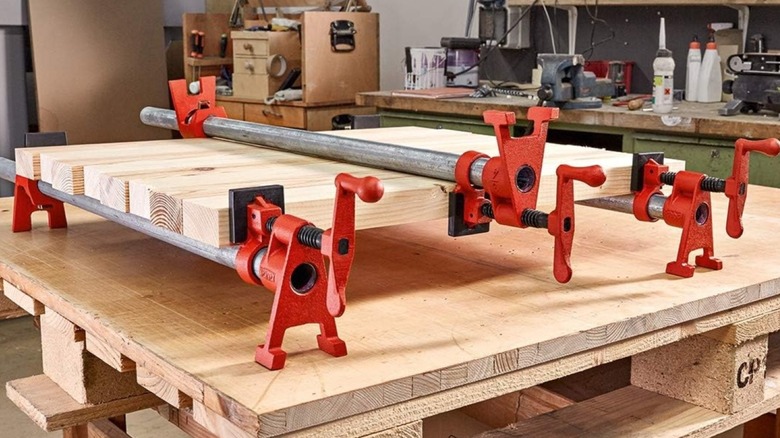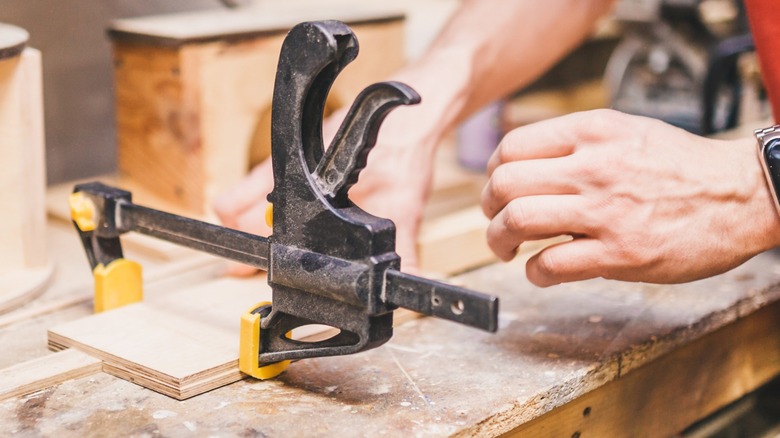C-Clamps Vs. Bar Clamps For Woodworking: What's The Difference?
We may receive a commission on purchases made from links.
Woodworkers use different types of clamps to hold project pieces tightly to one another. Two of the most common types of clamps fall into two categories: C-clamps and bar clamps.
C-clamps (an example shown below) have a straightforward design that consists of a cast or forged metal frame shaped like the letter C from which it gets its name. The fixed jaw, or clamping surface, is machined or ground smooth perpendicular to the centerline axis of the C-shaped frame.
The opposing end of the frame is threaded for a lead screw that runs parallel to the frame's centerline. A button is attached to the end of the lead screw so that it faces the fixed jaw often in a manner that allows some axial play as it comes into contact with the surface being clamped. The other end of the screw typically has a pin inserted through it at 90-degrees that allows a better grip when hand tightening the clamp.
Bar clamps also have opposing clamping surfaces or jaws. However, instead of using a rigid metal frame like a C-clamp, the movable jaw, and sometimes the fixed jaw, of a bar clamp slide on a bar that can be a round pipe or flat metal bar, depending on the clamp's design. A speed clamp, another popular woodworking clamp, is also an example of a bar clamp.
Which is better for woodworking: Bar clamps or C-clamps?
A C-clamp's best feature is that they are easy to use. In addition, the rigid frame allows substantial clamping pressure without deflection. However, in woodworking, too much clamping pressure can present problems, especially with the C-clamp's small contact surfaces. Failure to use a sacrificial piece between the clamp's jaws and the wood can leave indentations in the finished surface.
The simplicity of the C-clamp may trick you into thinking it's the best value clamp for those on a budget. So, you might be surprised to find out that you can find quick-release bar clamps at Harbor Freight for under $5 that are actually worth buying.
While speed clamps and quick-release bar clamps are ready for use straight from the package, pipe clamps, often considered the best clamps for woodworking, require an additional piece. When you buy a pipe clamp, such as the Bessey ¾-inch H Style Pipe Clamp (list price $15.99 on Amazon), you'll also need a length of ¾-inch diameter pipe (although different size pipe clamps require appropriately sized pipe).
One of the best features of pipe clamps is that their clamping capacity depends on how long the pipe is. You could buy a pair of pipe clamps and have multiple sizes by having different lengths of pipe to fit various projects.


